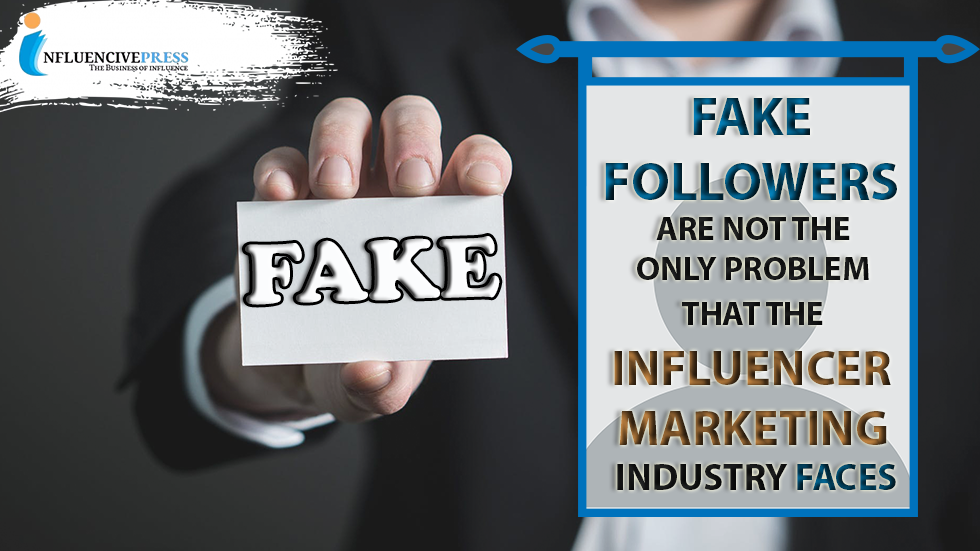Problem that the Influencer Marketing Industry faces
Marketing has undergone a colossal change. Previously, a sizable number of product promotions were done in the form of celebrity endorsements. In today’s day, that has been replaced by online influencers. Content is produced by businesses and brands, and those brands approach influencers online to promote and market those products. This Influencer marketing strategy has gained popularity rapidly in the past few years and has caused a shift in the landscape of marketing.
Compared to traditional forms of marketing and advertisements, influencer marketing has been more effective in actually connecting with the audience because, in this situation, the audience has chosen to follow certain influencers at their will. However, multiple influencers on social media platforms tend to have fake followers. These are bot accounts that a) follow accounts on social media based on their search and activity and b) followers bought by influencers to increase their follower count and give out the illusion of popularity and credibility. This can be deceiving for brands trying to get influencers to market their products. However, these bots are not the only problem that plagues the influencer marketing industry. Here, we are going to discuss certain issues faced by this industry.
Low Engagement
An issue faced by both, the influencer and the brand, is the lack of engagement in the accounts. The social media algorithm, particularly Instagram, displays the post of a user to a humble 10% of their audience. If you make a post on Instagram, you might see likes from primary accounts you engage with personally despite having a decent following count. This is because multiple accounts that follow you but you do not engage with are not getting to see your post in the first place. This is a disadvantageous situation for businesses and business accounts.
Cost-ineffectiveness and high expenses
Influencer accounts with a high authentic following instead of fake followers have an engagement much higher than that of the average user or micro/nano influencers. Unfortunately, getting such accounts to market and promote a product can be overly draining on the pockets of brands since these macro-influencers charge a hefty amount. It becomes increasingly difficult for smaller brands to approach such influencers because of the expenses and brands that can afford such promotional campaigns on the regular are generally businesses that are well-established and influential enough to not require influencers for their marketing and advertisements.
Narrow Platform
Any influential account throughout social media such as Twitter, Facebook, etcetera, should be a viable option for influencer marketing, however, it has been narrowed down to dominantly Instagram. Twitter in itself is a highly popular social media platform with influential accounts that have high engagement but the promotional channel has been narrowed down to Instagram. The difference in the influence perpetrated by platforms such as Twitter, Facebook, YouTube, etcetera versus Instagram isn’t astonishing or high. Rather, in multiple cases, the former could be a better option but due to their lack of usage for promotional campaigns, they now lack the audience that would be affected by brands which narrow the market down for the influencer marketing industry.
Saturation
The overbearingly increasing number of influencers has caused incessant competition and extreme saturation in the market. The engagement in the platform is already low for micro-influencers but this saturation makes it worse for those accounts. If an account had a 10% post visibility, increased accounts can make it drop to 5%, sometimes less, sometimes more. Saturation rate also plays a key role here. Saturation rate is the percentage of sponsored posts on the account of an influencer. People follow certain accounts because of the user running the account and not to see what brands are being promoted by that user. So, naturally, if the influencer constantly posts promotional content, their audience is not getting the content they signed up for and end up hitting the unfollow button. The influencer marketing industry needs to be aware of this and approach accounts with a lower rate of saturation.
Influencer Incompetence and Unreliability
Certain influencers will agree to work with brands but will never promote the product. They tend to become unresponsive to the brand collaborator. Unfortunately, this is a common practice and is one of the biggest problems that influencer marketers have to face. There are incidents where influencers have breached exclusive contracts without information it to the brands or ceased communication after not withholding their part of the promotional deal after receiving the free product and the payment. This is a common practice that tends to be as much of a nuisance to the businesses as fake followers. This reduces the Return of Investment (ROI) because the money that an influencer wants or needs is not equivalent to the quality of content being produced by the influencer.
Sponsored Ads
A sizable population of the user base on social media does not care about sponsored ads for the reason that the average person uses social media for their personal entertainment. People have historically disliked advertisements. Television ads were deemed as annoying because people wanted to watch their favourite TV show or movie, YouTube ads are almost always skipped and website ads and always removed. It is not very financially viable most of the times nowadays because people do not prefer engaging with advertisements. For example, Google AdSense pays the user when other people on the website or profile click on the ads that have been generated but rather, people always click on the cross icon at the top of the ad. The only time someone clicks on the ad is when they do it by accident or subconsciously.
Conclusion
The Influencer Marketing Industry is here to stay despite all the technical and personal cons since it is a sales channel that works splendidly for modern-day companies, especially if those companies and businesses and brands based online. Not only is there competition amongst the influencers but there is also competition amongst businesses so it is not surprising for influencers to ditch certain brands for other brads that are willing to pay better. Thus, brands must educate themselves on this facet thoroughly to minimize mistakes.

